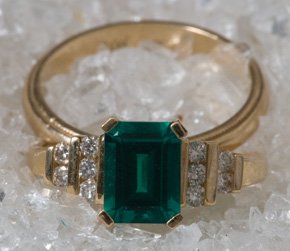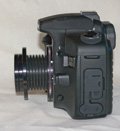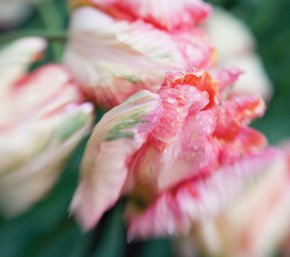Specialty Lenses
| There is a whole world of lenses that don't quite fit into what would be considered "normal," although some of them can be used for normal purposes. The most popular of these types of lenses is the macro lens. Available in 60mm, 90-105mm, and 180mm focal lengths, macro lenses are optimized for focusing close-up and can reproduce subjects at life size, or at a 1:1 ratio, to show fine detail, or for photographing small objects (Figure 3.21). Figure 3.21. Macro lenses are popular choices for photographing details and small subjects. They allow you to capture images up to life size, or 1:1. They can also be used for other purposes, making them a good all-around lens.
The longer macro lenses are often used as portrait lenses but you need to be carefulthis is one case where your optics can actually be too sharp! Going a step further, Canon has a special macro lens for extreme close-ups, the MP-E 65mm (Figure 3.22). This lens is able to reproduce everything from life size 1:1 up to five times life size, 5:1. You can forget auto-focus with this lens, and depth of field, especially at high magnifications, is minimal (Figure 3.23). Figure 3.22. The Canon MP-E 65 is a unique macro lens. You can photograph anything from life size to 5x life size. Because there is no focus control on the lens, all focusing is done by moving the camera.
Figure 3.23. The MP-E 65 lets you get up to 5x the actual size of your subject, but the depth of field is very shallow, making this a challenging lens to use successfully.
Another fun lens, and one that's affordable to almost anyone, is the Lensbaby (www.lensbaby.com) shown in Figure 3.24. This unique lens has a flexible body that lets you set the area of sharp focus where you want and throw the rest of the image into soft focus. By simply moving the lens in or out, and angling it (Figure 3.25), you can create some amazing effects that would be impossible otherwise without spending hours in Photoshop. Figure 3.24. The Lensbaby is available for different camera systems, and it's one of the most unusual and fun tools you can carry around.
Figure 3.25. By moving the Lensbaby in or out and bending it, you can control which areas of your image are in focus and which are soft. It's a fun way to experiment with new looks.
Tip Don't go wild with lenses when you're just starting out. By learning to use one or two lenses well, you'll have a better understanding of what you want and need in a lens before shelling out a lot of money that you might not need to spend at all. I suggest getting two zoom lenses that cover the 24mm to 300mm range and learning your system inside out before moving on to other lenses. The image shown in Figure 3.26 was used as my holiday card last year. The Lensbaby let me capture the center of the poinsettia in sharp focus while throwing the edges into soft focus, giving me an interesting effect that lets my image stand out from the typical shot. Figure 3.26. I used a Lensbaby to get the soft focus look around this poinsettia for my holiday card last year.
Other specialty lenses include teleconverters (Figure 3.27), which magnify any lens they are used with by either 1.4x or 2x. These converters have a drawback, though. A 1.4x converter will cost you one f-stop, turning an f/5.6 300mm lens into an f/8 420mm lens. Be sure that your camera can still auto-focus with the slower aperture. When you use a 2x converter on the same lens, you lose two stops, ending up with an f/11 600mm lens that almost certainly won't auto-focus. Figure 3.27. Teleconverters, like these from Canon, extend the reach of your lenses. Canon has 1.4x and 2.0x converters available for auto focus lenses.
|
EAN: 2147483647
Pages: 91






